Wembley Stadium connected by EE
| Capacity | 90 000 |
|---|---|
| Country | England |
| City | London |
| Clubs | - |
| Inauguration | 03/2007 |
| Construction | 2003–2007 |
| Cost | £ 798 million ($ 1.57 billion) |
| Design | Foster + Partners, HOK Sports |
| Contractor | Multiplex Constructions (UK) Ltd. |
| Address | South Way, London HA9 0WS |
Advertisement
Wembley Stadium – stadium description
What is the history of Wembley Stadium?
You can find out more about the historic Wembley Stadium on a separate webpage
The first Wembley Stadium was built between 1922 and 1923, and in just 300 days one of the largest stadiums in the world at the time was built, although interestingly it was initially thought of only as a temporary facility. The stadium was built at a cost of £750,000, using 25,000 tonnes of concrete, 1,500 tonnes of steel and half a million rivets.
It was inaugurated on April 28, 1923, on the occasion of the FA Cup final (Bolton Wanderers – West Ham United 2:0). Interest in the match exceeded all expectations. Exact attendance figures are not available, the official figure is 126,047 spectators, but it was probably much higher, with speculation ranging from 150,000 to even 300,000 attendees. If the actual number of spectators was close to the upper limit of estimates, this would represent an unprecedented world record.
The venue was built for the British Empire Exhibition (hence its initial name British Empire Exhibition Stadium or simply Empire Stadium). The exhibition was held in 1924 and 1925, and the stadium was scheduled to be demolished afterwards, along with other post-exhibition facilities. However, the stadium managed to be preserved, and over the following years it gained a reputation as one of the most distinctive and recognisable sports venues in the world.
Designed by John William Simpson and Maxwell Ayrton and built by Sir Robert McAlpine, the stadium could officially hold 125,000 spectators (including 30,000 seats). The monumental building combined features of ancient Roman and Great Mogul Empire (northern India) architecture. Its distinctive feature was the two 38 m (126 ft) high white towers located on the sides of the main stand facade.
The stadium had a running track around the pitch, from 1955 it was equipped with floodlights, and from 1963 the auditorium was fully covered by a roof, supported by internal supports, limiting visibility for some fans. The final capacity of the arena, after the installation of seats in all stands in 1996, was 76,000 spectators.
Called the home of English football, it was the venue for regular appearances by the England national football team and hosted the FA Cup finals every year. It was the main arena for the 1948 Olympic Games, hosted some matches (including the final) of the 1966 World Cup and 1996 European Championships, and played host to European club finals, major rugby matches and competitions in many other sports, as well as concerts by world music stars. Greyhound racing and speedway competitions held at Wembley have been very popular.
How did the new Wembley Stadium develop?
Towards the end of the 20th century, discussions began to take place about building a new national stadium for the new century to replace the distinguished Wembley. The possibility of a stadium in Manchester was also considered, but in December 1996 it was finally decided that the new venue would be built on the site of the old Wembley, which was to be demolished.
The project to build a new national stadium was initiated by Sport England (then the Sports Council for Great Britain), the body that distributes funds for the development of sports infrastructure from The National Lottery. In late 1998 and early 1999, this entity allocated £120 million to the task.
The beneficiary of the grant was the Football Association (FA), the English football association, which set up Wembley National Stadium Ltd. (WNSL). This company was to manage the investment and, in the future, the management of the completed facility.
In 1999, WNSL bought the stadium from the existing owner (Wembley plc) for £103m (plus an additional £3m of administration costs). The deal was funded by money from The National Lottery, with the rest of the donation going towards the architectural design work.
The design of the new stadium was carried out by Foster + Partners and HOK Sports (later known as Populous), working with designers from Mott Stadium Consortium. The design was presented in 1999. On September 11, 2000, a construction deal was signed with the stadium's main contractor, Multiplex. The selection of the main contractor was made with a lack of adherence to best practice and tendering procedures, which later raised questions about the legitimacy of subsidising the project with public money.
On October 7, 2000, the last match was played at the old Wembley. The farewell to the venue did not go very well, as the England national team lost 0:1 to Germany in a World Cup qualifying match.
What was the cost of delivering the new Wembley project?
According to the agreement with the main contractor, the cost of building the stadium was to be £445 million. This was to be a fixed price, no longer subject to later changes. In addition, a figure of £21m was also reckoned for infrastructure development. The costs incurred for the purchase of the old stadium amounted to £106m. Project management costs were to be £86 million, financing costs £79 million and £20 million was set aside for contingencies, total: £757 million.
The FA struggled to meet the budget and requested additional public funding, which delayed the project. Grants were eventually secured from the Department for Culture, Media and Sport and the London Development Agency.
The budget was as follows: more than half of the amount needed ( £426 million) was obtained through a loan from Westdeutsche Landesbank, a loan for £7 million was also provided by Credit Suisse First Boston, a total of £161 million was obtained from public funding (£120 million from The National Lottery, £21 million from the London Development Agency and £20 million from the Department of Culture, Media and Sport), and the FA's own contribution was £148 million and £15 million directly from WNSL.
Towards the end of construction, WNSL agreed to pay additional funds to the main contractor and the total cost of completion rose to £798 million. At the time of opening, the new Wembley was the most expensive stadium in the world.
Who built the new Wembley Stadium?
The main contractor was Multiplex from Australia. Project management was handled by Symonds (at the planning stage this function was carried out by McBains Limited – later renamed Tropus Limited). The steel elements were the responsibility of Cleveland Bridge, which was replaced by Hollandia in the summer of 2004. The demolition of the old Wembley was carried out by Griffiths McGee.
Many other parties and subcontractors were involved in the project, enough to say that residents from every county in England had a hand in creating the steel arch towering over the stadium.
When was the new Wembley built?
Demolition did not begin until September 30, 2002 and was completed in 2003, at which point construction of the new arena began. 4,000 piles were driven under the stadium's foundations. Ninety thousand cubic metres of concrete and 23,000 tonnes of steel were used to build the facility. The pitch was lowered by 4 m compared to the previous stadium.
At the start of construction, the opening date was set for May 2006, so that the facility would be ready for the FA Cup final. By early 2006, however, it became clear that the delays were too great to complete the work in time. In the end, construction took almost a year longer than expected and the stadium was handed over to the English federation on March 9, 2007.
What problems occurred during the construction of Wembley Stadium?
The construction of the new Wembley was not free of problems. In the summer of 2004, the company responsible for the steel elements, Cleveland Bridge, withdrew from the project. It was replaced by the Hollandia company. On March 20, 2006, a roof component slipped, causing the evacuation of more than 3,000 workers from the site. At the same time, damage to sewer pipes requiring repair was also discovered.
The most serious incident occurred on January 15, 2004, when 54-year-old Irishman Patrick O'Sullivan was crushed by a falling platform and died at the site. Another worker was also seriously injured in the same accident. The company where O'Sullivan was employed, PC Harrington Ltd, was fined £150,000 for failing to comply with safety rules. On 12 October 2007, a memorial plaque was unveiled at the stadium in memory of the deceased employee.
What was the balance of investment in the new Wembley Stadium?
The main contractor, Multiplex, ended the investment with a financial loss estimated at around £150m. Blame was placed on mistakes and misunderstandings with collaborating companies, leading to high-profile court cases against Cleveland Bridge and Mott MacDonald.
However, the FA can count the project as a success. As well as meeting the overarching objective of creating a modern, representative stadium that can host national team matches, FA Cup finals and other events in the right conditions, the investment has proved to be profitable, enabling the loans taken out for the construction to be repaid. A large proportion of the stadium's income comes from profits from the sale of business seats.
When did the new Wembley Stadium open?
The opening of the new Wembley was to be sealed with the FA Cup final. At least two events were required beforehand in order to obtain the safety certificate to host it, so two smaller ones were held at the stadium as recently as March 2007: On March 17, the venue was opened to the local residents and members of the England national team supporters' club for tours, and on March 24, an England v Italy under-21 national team match (3:3) was held.
On May 19, 2007, the first FA Cup final was played at the new Wembley, with packed stands. The trophy was won by Chelsea FC, after a 1:0 win over Manchester United. The only goal was scored at the end of extra time by Didier Drogba. During the construction period, the FA Cup finals were played at Millennium Stadium in Cardiff.
On June 1, 2007, the England national team returned to Wembley, having played their home matches at various stadiums around England since 2001. England's first opponent at the new stadium was Brazil. The friendly encounter ended in a 1:1 draw.
What kind of events take place at Wembley Stadium?
With a capacity of 90,000 spectators, Wembley Stadium is the largest football arena in the UK, and the second largest (after Camp Nou) stadium in Europe. As England's premier FA-owned football venue, it regularly hosts the country's national team matches and FA Cup semi-finals and finals.
In addition, Wembley is also home to the Community Shield (the equivalent of the Super Cup matches played in many countries), EFL Cup (League Cup) finals, the FA Trophy (cup competitions for teams in tiers 5-8) and the FA Vase (cup competitions for teams in tiers 9 and 10) and, since 2015, the women's FA Cup finals.
It has also become a tradition to hold play-off finals for promotion to a higher division from the Championship, League One, League Two and National League (second, third, fourth and fifth league levels respectively). The Championship play-off finals in particular, which decide who will play in the Premier League next season, attract a lot of attention and enjoy a very high attendance in the stands.
When has Tottenham played at Wembley?
Wembley does not have a club that regularly plays home matches there. However, Tottenham played their matches at Wembley between 2016 and 2019 (in the 2016/17 season only in the European Cups). This was due to the demolition of White Hart Lane and the construction of the new Tottenham Hotspur Stadium in its place.
How many Champions League finals have been held at Wembley?
On May 28, 2011, the Champions League final was played at the new Wembley for the first time, with FC Barcelona beating Manchester United 3:1. It is worth noting that the old Wembley has hosted European Cup finals (the predecessor to the Champions League) five times.
Shortly after the 2011 final, the stadium was granted the right to host another Champions League final in 2013. It was controversial to grant one stadium the right to host two finals of Europe's most important club competition in such a short interval, but this was explained by the desire to celebrate the FA's 150th anniversary, which fell in 2013. In the second final, played on May 25 2013, Bayern Munich defeated Borussia Dortmund 2:1.
In September 2019, the stadium was granted the right to host the third Champions League final, which was due to take place in 2023. The date was symbolic as Wembley celebrates its centenary in 2023 (counting from the opening of the old stadium). However, following the outbreak of the COVID-19 pandemic, the organisation of the LM finals was rescheduled and the final at Wembley will take place in 2024.
What role did Wembley play during the 2012 Olympic Games?
London hosted the Summer Olympics for the third time in 2012. The previous time, in 1948, Wembley was the main arena for the games; this time the newly built Olympic Stadium was the most important stadium, hosting the opening and closing ceremonies as well as the athletics competitions. Wembley, however, hosted some of the matches (including the finals) of the men's and women's football tournaments.
What will Euro 2020 at Wembley be remembered for?
Played across Europe, Euro 2020 (postponed to 2021 due to the COVID-19 pandemic) saw three group stage matches (all involving England), two ⅛ of the final, both semi-finals and the final taking place at Wembley. England and Italy faced each other in the final.
For the English, it was the first ever European Championship final. The hosts had hoped to win the title at Wembley, as they had done at the 1966 World Cup, but the trophy went to the Italians, who won after a series of penalty kicks. A scandal erupted around the final after riots broke out before the game and unattended fans without tickets broke into the stadium.
What other important football matches has Wembley hosted?
On June 1, 2022, Wembley hosted the Finalissima, a match between the winner of the last European Championships (Italy) and the Copa América (Argentina). On July 31, 2022, the venue hosted the final of the women's European Championships, in which the home team won after extra time against Germany 2:1, claiming England's first ever title.
What non-football sporting events take place at Wembley?
In 2013, Wembley was one of the arenas for the Rugby League World Cup. The stadium hosted two semi-finals of the tournament (both of which took place on 23 November). In turn, Wembley hosted two Rugby World Cup group matches in 2015. The venue also hosts the final of the national club rugby league cup competition, the Challenge Cup, every year. Each year Wembley also hosts single matches of the most important American football league, the NFL, played as part of the so-called NFL International Series.
The new Wembley was built primarily as a football venue, which is also very well suited to hosting rugby and American football competitions. However, the stadium has a multifunctional character and often hosts other sports as well. Amongst other things, Wembley hosts boxing bouts, including fights with world heavyweight titles at stake, such as the clash between Anthony Joshua and Volodymyr Klychko in 2017, and even motor racing (Race of Champions).
Is it possible to listen to good music at Wembley?
The stadium is known as a venue for concerts featuring some of the biggest stars in world music. George Michael, Bon Jovi, Adele, Rihanna, Ed Sheeran, Metallica, U2, Foo Fighters, Eminem, Madonna, Taylor Swift, Beyoncé, Spice Girls, Coldplay, Harry Styles, Oasis, AC/DC – these are just a few of the many performers who have performed at Wembley.
What is the full name of Wembley Stadium?
Although the FA initially resisted selling the naming rights to the stadium, a sponsorship deal was struck with mobile network operator EE in February 2014, which saw the venue renamed Wembley Stadium connected by EE.
What does the new Wembley Stadium look like?
The most important change compared to the old Wembley is the absence of a running track around the pitch. The new stadium was built by the football federation, hence it has been given a football layout. The stands of the new arena are steeper and much closer to the playing field, although it is notable that a little more space than the required minimum has been retained between the first rows of spectators and the end lines of the pitch.
The stadium has been designed to provide the best possible acoustics and to follow in the tradition of the former Wembley, known for its incredible uproar during England national team matches (the so-called 'Wembley Roar'). However, the atmosphere at the new Wembley is no longer as lively as at the old stadium, partly blamed for this by giving the entire middle tier of the stands to business supporters and failing to create a single sector behind one of the gates for the most ardent fans.
What kind of turf is at Wembley?
Although the roof of the stadium was fitted with movable sections to help provide suitable conditions for the pitch, the state of the pitch in the first few years after the stadium opened left much to be desired and was a frequent subject of criticism from players and coaches. After a series of frequent replacements of the surface, it was decided in the summer of 2010 to change the type of turf from natural to hybrid.
What do the stands at Wembley look like?
The stadium's auditorium is divided into three tiers. The lower tier has 34,303 seats for spectators, the middle tier has 16,532 and the upper tier holds 39,165 people – a total of 90,000 seats. The stands are equipped with red folding seats. Two wide screens have been installed behind the gates and 'Wembley' lettering has been arranged from the seats, in a similar style to the previous stadium. Care has also been taken to ensure adequate comfort, with each seat offering more legroom than was available in the Royal Box at the old Wembley.
As at the old Wembley, the pitch is situated on an east-west axis, with the main stand located on the north side. In the main stand is the royal box, where trophies are traditionally presented to footballers, for example after an FA Cup final. To reach the box, players have to climb 107 steps up the stairs (compared to 39 in the old stadium).
The venue has an extensive hospitality offer, offering membership to what is known as Club Wembley, access to the stadium's exclusive restaurants, as well as private boxes overlooking the pitch, which can be used at any time. The entire middle tier of the stands are seats available exclusively for the premium offer. The stadium also has 310 wheelchair spaces and 400 seats for journalists.
What kind of roof does Wembley have?
The stands of the stadium are fully covered by a canopy, fitted with additional movable sections – over the stands behind the goals and partly over the south stand. However, the roof does not move over the pitch, so the stadium is not fully enclosed. Exposing sections of the roof is intended to improve ventilation and to increase sunlight and control the shade falling on the pitch.
The roof has a surface area of 40,000 m², of which 13,722 m² are movable parts. LED floodlights have been installed under the roof. At its highest point, the roof rises 52 m (171 ft) above the turf.
The roof has no internal supports, which were present at the old Wembley and obscured some people's view of pitch events. The elimination of the supports was achieved by a giant arch that rises above the stadium and, using cables, carries 100% of the load of the northern – and 60% of the southern – part of the roof.
What are the characteristics of the arch rising above Wembley Stadium?
Just as the two white towers were a symbol associated with the previous stadium, the huge steel arch has become a feature of the new Wembley. The arch weighs 1,750 tonnes, rises 133m (436ft) above ground level, has a span length of 315m and a diameter of 7.4m (except for the tapered sections at either end).
Interestingly, the initial plans called for four masts to be erected at the main stand, to which ropes would be attached to support the northern part of the roof. However, the design later evolved and a more spectacular solution was decided in the form of an arch running above the stadium.
The arch was set at an inclined position, at an angle of 112°, and its erection was one of the biggest challenges during the construction of the stadium. Prefabricated segments were created in Darlington in the north of England, from where they were transported to London and assembled on site.
The arch structure took more than 10 months to put together. This was followed by a lifting operation using rope jacks, which took six weeks, reaching its final position on June 24, 2004. Until the arch was connected to the roof structure, it was supported by temporary ropes. The arch was attached to two bases, for the foundations of which deep piles were set. In 2014, LED lights were installed on the arch, allowing it to be illuminated in many colours and create striking illuminations.
What is inside Wembley Stadium?
The stadium has 34 bars, eight restaurants and 688 smaller food and drink outlets, as well as 47 other retail and service outlets. The venue has 2,618 toilets, more than any other building in the world. Moving around inside is facilitated by 30 lifts and 26 sets of escalators. The English football federation is based indoors at the stadium.
What does Wembley look like from the outside?
The building's façade features a large amount of glazing, and the façade at the main entrance on the north side has been enhanced with multimedia screens. The outer perimeter of the building is 1 km long. The stadium is encircled by a promenade which, apart from the south side, is on an elevated level. A staircase leads up to it from the east, north and north-west sides.
In front of the main entrance is a bronze statue of Bobby Moore, captain of the England team that won the country's only ever World Cup in 1966, beating Germany in the memorable final at Wembley. The statue was unveiled on May 11 2007. On August 29 2015, another statue honouring rugby league legends was unveiled beneath the stadium.
The widest staircase, on the north side (only built in 2021-2022, replacing the former footbridge that was a remnant of the old stadium) connects the stadium to Olympic Way. The staircase on the north-west side provides direct access to the OVO Arena Wembley. The stadium is located in the borough of Wembley (from which it takes its name, by the way), in the north-west of the London metropolitan area.
What is located around Wembley Stadium?
The area around the stadium is known as Wembley Park. Its centrepiece is the representative Olympic Way avenue, running from the stadium to Wembley Park tube station. Wembley Stadium railway station is also located close to the stadium (south-west of the stadium). There is limited parking in the area, so fans are recommended to use public transport to get to the stadium.
Since the construction of the new stadium, the whole area around the stadium has also started to transform intensively. In the immediate surroundings, new buildings are being erected, mainly of a residential and commercial nature.
Is it possible to take a tour of Wembley Stadium?
The venue offers what is known as the Wembley Stadium Tour, which is a guided tour of the stadium. The experience includes a tour of the boardroom, changing rooms, a walk through the players' tunnel, the stands and the King's box. The stadium is full of memorabilia relating to its history and the events that took place there.
Advertisement
Pictures
-

12.2016 © Cmglee (CC BY-SA 4.0) 
30.05.2015 © Julian Tollast 
30.05.2015 © Julian Tollast 
15.09.2019 © JimJimJim2018 
01.07.2017 © Szymon Sieciński 
15.05.2015 © Enguerran Fouchet (cc: by-nc-nd) 
10.05.2014 © mcmillant75 
10.06.2017 © .Martin. 
10.06.2017 © .Martin. 
2017 © Instagram: @richimpossible 
10.06.2017 © (Mick Baker)rooster 
10.06.2017 © (Mick Baker)rooster 
14.01.2014 © Greg McCormick 
08.05.2015 © Justin Geyser 
31.10.2014 © James Attree 
01.04.2009 © Hugh Nutt 
2017 © Instagram: @highflyingdroneshots / www.highflyingdroneshots.co.uk 
13.06.2018 © (Mick Baker)rooster 
23.04.2015 © John Cooper 
26.09.2017 © Sheep"R"Us 
01.03.2015 © Ziggy Szot 
08.10.2014 © Jas Mann 
08.10.2014 © Jas Mann 
27.08.2015 © Thorsten Weidinger 
2017 © Instagram: @richimpossible 
2017 © Instagram: @richimpossible 
2017 © Instagram: @richimpossible 
2017 © Instagram: @richimpossible 
2017 © Instagram: @richimpossible 
2017 © Instagram: @richimpossible 
01.06.2019 © EmmaLeP 
06.08.2016 © Nick Howells 
30.05.2015 © Bangkok Bloke 
27.03.2015 © Felipe Gálvez 
09.11.2019 © Anders Krøgh Jørgensen 
15.08.2016 © Mitch Rosen
Related news
2025
-
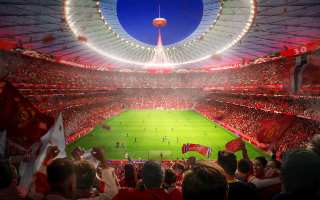
Great Britain: 2035 Women’s World Cup stadiums. New Trafford confirmed
Great Britain could host the 2035 FIFA Women’s World Cup, and today the list of stadiums that could welcome the world’s best players was revealed. England, Scotland, Wales and Northern Ireland have submitted a joint bid – the only one FIFA has received – which puts the project firmly in pole position.
-
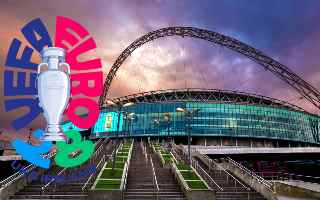
Euro 2028: Opening match in Cardiff, final at iconic Wembley – Euro 2028 venues revealed!
Although Euro 2028 is still a few years away, excitement surrounding the upcoming tournament is already building. During a ceremonial presentation at London’s Piccadilly Circus, UEFA revealed the details of the schedule and the stadiums that will host the European Championship, co-organized by England, Wales, Scotland, and the Republic of Ireland.
-
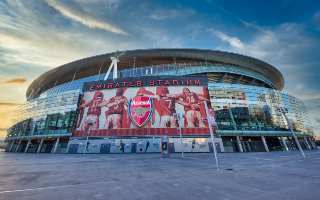
England: Arsenal planning Emirates expansion and temporary switch to Wembley
Arsenal are considering several proposals for a major redevelopment of the Emirates Stadium — a project worth up to £500 million that could restore its status as the largest football venue in London, overtaking both West Ham United and local rivals Tottenham Hotspur.
-
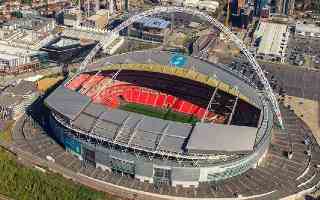
England: College football coming to Wembley for the first time in 2026
A major sporting event is set for London – for the first time ever, Wembley Stadium will host a college football game. In September 2026, as part of the Union Jack Classic series, the Arizona State Sun Devils will face the Kansas Jayhawks.
-
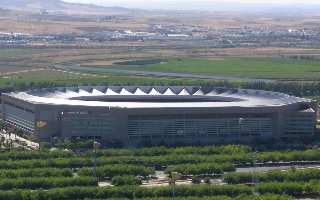
Spain: La Cartuja, the Spanish Wembley? World Cup works to cost €120 million
Spain is preparing for the 2030 World Cup, which it will host jointly with Portugal and Morocco. One of the eleven Spanish host stadiums will be Estadio La Cartuja in Seville – the third-largest venue in the country after Santiago Bernabéu and Metropolitano.
-
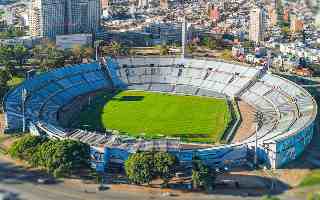
World: Montevideo favourite to host the Finalissima, but competition is fierce
In March 2026, the next edition of the Finalissima – the prestigious clash between the Copa América and European champions – will take place. This time it’s Argentina versus Spain, two of today’s football powerhouses.
-
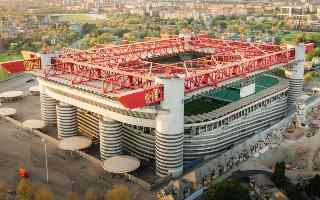
Italy: Manica–Foster duo to design new stadium for Inter and Milan
Norman Foster, one of the world’s most renowned architects, will design the new stadium for Inter and Milan. The decision has been made, and the contract is now in its final stages. Foster will collaborate with the Manica architecture firm, previously selected by Milan for their San Donato stadium project.
-
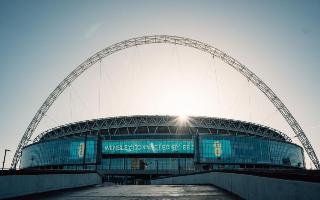
England: EE launches UK's first standalone 5G network at Wembley
Wembley has become the first sports venue in the UK to have a dedicated standalone 5G network. Thanks to this innovation, fans attending events at Wembley can count on reliable, super-fast mobile connectivity.
-
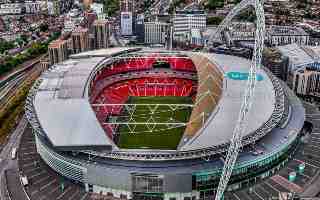
Spain: El Clásico at Wembley? Barcelona unsure about return to Camp Nou
Work on Spotify Camp Nou is progressing rapidly with the aim of resuming matches this season. According to Mundo Deportivo, there is optimism about the possibility of returning by the time of El Clásico.
2024
-
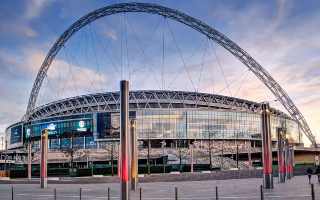
England: Controversy over new fan zone outside Wembley
Wembley Stadium has applied for a license to establish a fan zone at Arena Square for up to 3,000 people during event days, featuring temporary food and drink stalls, a stage, and a large screen.
-
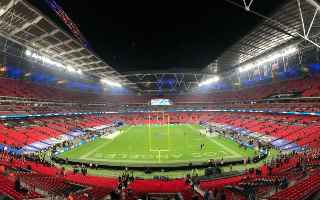
England: Wembley and athletics - not many fans know about this feature!
Wembley Stadium is an iconic venue, and since its redevelopment was completed in 2007, it has hosted many of the world's biggest events. From FA Cup and Champions League finals, to NFL games, Tyson Fury's fights, and Taylor Swift concerts. However, there is one feature of the venue that is not even known to English fans.
-

England: Extra security for Champions League final to avoid embarrassment from Euro
Alcohol, drugs, lack of tickets and brawls are just a few of the offences of English fans at the Euro 2020 final. After such a major organisational failure and Netflix documents, the organisers are beating their breasts, promising to improve. What will be done about it and will it eventually get better?
-

England: Documentary on Wembley attack shown ahead of Champions League final
On May 8, a documentary film titled "The Final: Attack on Wembley" premiered on Netflix, depicting the day of the Euro 2020 final between England and Italy. The date coincided with Wembley's busy schedule. The main event there will soon be the Champions League final.
-

England: Champions League final returns to Wembley
Real Madrid are in with a chance of winning their 15th Champions League title, but Borussia Dortmund are determined to thwart the Royals and return to Dortmund with the trophy. Saturday's match will be a clash and a farewell to two legends, Toni Kroos and Marco Reus, and the arena for this duel will be the legendary Wembley Stadium.
-

England: Will Manchester United leave Old Trafford?
The Red Devils dream of a modern stadium, but due to the age of the installations and the complex surroundings, a major upgrade is not an option. The stadium will have to be built from scratch and the club will have to move out. What are its options?
-

England: Well-known portal has chosen 100 best stadiums. There are surprises
FourFourTwo, a sports-dedicated portal, has selected the 100 best stadiums in Great Britain. As the author of the list ironically stated, "We’re convinced there’ll be absolutely no arguing about it…”. So, let's take a look at which stadiums made it into the ranking.
2023
-

UEFA: Official announcement of EURO 2028 and EURO 2032 hosts
UEFA has officially announced that the UK and Ireland will host the European Football Championships in 2028, while Italy and Turkey will co-host the event in 2032.
-

England: Wembley to host 2024 UCL final - recapping its European finals hosting history
Wembley Stadium will host its eighth UEFA Champions League final in the 2023/24 season including fixtures at the original and the modern stadium. The stadium most recently hosted the event in 2013 and its first final was in 1963. Teams have earned maiden successes in the English capital. Others have secured significant additions to their European trophy haul. How did the past European finals at Wembley pan out?
-

England: 100 years since the opening of Wembley Stadium
The story of one of the greatest stadiums in the world, which is famous not only among football fans. How has the legendary venue changed over ten decades? What tournaments and events has Wembley hosted?
-

EURO 2028: Great Britain and Ireland announce list of stadiums
The most important football tournaments are fast approaching, and with them comes discussion about the future hosts of both the World Cup and the European Championships. The front runners in the race to host EURO 2028 are Great Britain and Ireland.

 StadiumDB
StadiumDB